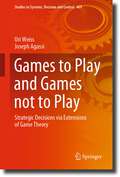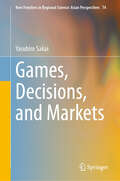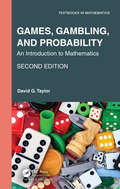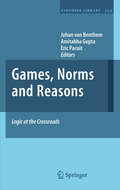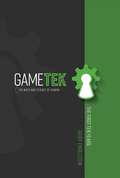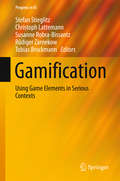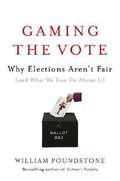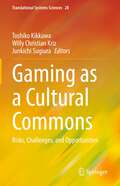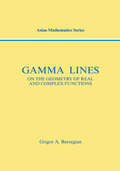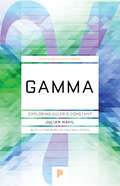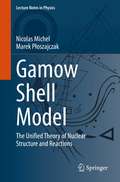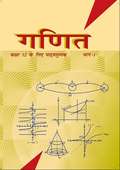- Table View
- List View
Games of Strategy (3rd Edition)
by Susan Skeath David Reiley Avinash DixitThe third edition uses resonant, real-world examples to simplify complex theoretical ideas, helping students see the value of strategic thinking in a variety of situations.
Games of Strategy (Fifth Edition): Instructor's Manual
by Avinash K. Dixit Susan Skeath David McAdamsComprehensive, clear, and approachable, with clever real-world examples that motivate students Games of Strategy is beloved by students and instructors alike for its flexible organization, focus on problem-solving, and engaging and accessible examples from diverse fields, like political science, biology, and business. The completely revised Fifth Edition adds the work of David McAdams, especially in the areas of market design and auction theory, and provides new insights into diverse applications, such as billion-dollar buy-outs, job offer negotiation, the Cuban Missile Crisis, and collusion in the school milk market.
Games to Play and Games not to Play: Strategic Decisions via Extensions of Game Theory (Studies in Systems, Decision and Control #469)
by Joseph Agassi Uri WeissThis book contributes to the theoretical discussions of equilibria that rest on error―in which we include mistaken choices of games to play. Extant game theory recommends diverse strategies (plans of actions) for various given games, particularly those in Nash equilibria, in which no player benefits from one-sided strategy alteration. The literature also refers to the design of games that fit given goals. This is the mechanism design theory; its function is to serve social planners ignorant of the preferences of the people intended to play them.Our study of games avoidance adds to game theory the meta-game of choosing what game to play and what game to avoid playing, and that both players and planners can generate. This comprises a shift from the maximalist position that aims to maximize possible profit to the minimalist one that aims at minimizing possible loss. This shift depends on the question, considering the public interest, what set of games is it advisable to encourage? Obviously, it is advisable to encourage playing some groups of games such as trade, as well as to discourage playing other groups of games such as wars. This shift makes the theory much more applicable to social science: usually, choosing what game to play is less practical than choosing what game not to play. This invites legislation and similar incentives; their study should aim at the improvement of their usefulness.Discussing the possibility of changing both game and strategy renders game theory part-and-parcel of social science. For this mathematical models will not do: it requires a clear distinction between describing options and explaining situations. Explanations may enhance efforts at improvement.
Games, Decisions, and Markets (New Frontiers in Regional Science: Asian Perspectives #74)
by Yasuhiro SakaiThis book critically discusses the historical backgrounds and new developments of the theories of games, decisions, and markets, with many possible applications to social and economic problems. Consisting of three connected parts, the book sheds new light on the role of merchants in the market economy under conditions of risk and uncertainty. Part I begins with the question of why and how John von Neumann and Oskar Morgenstern did joint work in game theory, namely, the theoretical study of strategic interactions among several decision makers. The duel between Sherlock Holmes and Professor Moriarty in Conan Doyle's famous detective story is recalled as a great inducement to Neumann and Morgenstern to invent zero-sum, two-person games. More general non-zero-sum games and associated Nash solutions are then discussed in relation to the generation-gap problem between a young couple and an elderly couple. Part II explores a set of very fundamental problems of individual decision making. Thetwo famous axioms of revealed preference ― Samuelson's weak axiom and Houthakker's axiom ― are skillfully connected and empirically reevaluated by the introduction of certain regularity conditions. The revealed preference approach is then extended from the original commodity space to the dual price space. Such dual treatment in microeconomics is further applied to the theory of cost and production, with the decomposition of the total factor price effect into the substitution and scale effects. Part III turns the reader’s attention to the interdependence of several markets. The almost forgotten Hicks–Morishima approach is newly revived with graphical illustrations of traded goods. The well-known Jones–Kemp approach to international trade is boldly expanded into the world of risk and uncertainty. Some striking results in comparative static analysis are derived, with favorable implications for the real world.
Games, Gambling, and Probability: An Introduction to Mathematics (Textbooks in Mathematics)
by David G. TaylorMany experiments have shown the human brain generally has very serious problems dealing with probability and chance. A greater understanding of probability can help develop the intuition necessary to approach risk with the ability to make more informed (and better) decisions. The first four chapters offer the standard content for an introductory probability course, albeit presented in a much different way and order. The chapters afterward include some discussion of different games, different "ideas" that relate to the law of large numbers, and many more mathematical topics not typically seen in such a book. The use of games is meant to make the book (and course) feel like fun! Since many of the early games discussed are casino games, the study of those games, along with an understanding of the material in later chapters, should remind you that gambling is a bad idea; you should think of placing bets in a casino as paying for entertainment. Winning can, obviously, be a fun reward, but should not ever be expected. Changes for the Second Edition: New chapter on Game Theory, New chapter on Sports Mathematics, The chapter on Blackjack, which was Chapter 4 in the first edition, appears later in the book. , Reorganization has been done to improve the flow of topics and learning., New sections on Arkham Horror, Uno, and Scrabble have been added., Even more exercises were added!. The goal for this textbook is to complement the inquiry-based learning movement. In my mind, concepts and ideas will stick with the reader more when they are motivated in an interesting way. Here, we use questions about various games (not just casino games) to motivate the mathematics, and I would say that the writing emphasizes a "just-in-time" mathematics approach. Topics are presented mathematically as questions about the games themselves are posed. Table of Contents Preface 1. Mathematics and Probability 2. Roulette and Craps: Expected Value 3. Counting: Poker Hands 4. More Dice: Counting and Combinations, and Statistics 5. Game Theory: Poker Bluffing and Other Games 6. Probability/Stochastic Matrices: Board Game Movement 7. Sports Mathematics: Probability Meets Athletics 8. Blackjack: Previous Methods Revisited 9. A Mix of Other Games 10. Betting Systems: Can You Beat the System? 11. Potpourri: Assorted Adventures in Probability Appendices Tables Answers and Selected Solutions Bibliography Biography Dr. David G. Taylor is a professor of mathematics and an associate dean for academic affairs at Roanoke College in southwest Virginia. He attended Lebanon Valley College for his B.S. in computer science and mathematics and went to the University of Virginia for his Ph.D. While his graduate school focus was on studying infinite dimensional Lie algebras, he started studying the mathematics of various games in order to have a more undergraduate-friendly research agenda. Work done with two Roanoke College students, Heather Cook and Jonathan Marino, appears in this book! Currently he owns over 100 different board games and enjoys using probability in his decision-making while playing most of those games. In his spare time, he enjoys reading, cooking, coding, playing his board games, and spending time with his six-year-old dog Lilly.
Games, Norms and Reasons
by Johan Van Benthem Eric Pacuit Amitabha GuptaGames, Norms, and Reasons: Logic at the Crossroads provides an overview of modern logic focusing on its relationships with other disciplines, including new interfaces with rational choice theory, epistemology, game theory and informatics. This book continues a series called "Logic at the Crossroads" whose title reflects a view that the deep insights from the classical phase of mathematical logic can form a harmonious mixture with a new, more ambitious research agenda of understanding and enhancing human reasoning and intelligent interaction. The editors have gathered together articles from active authors in this new area that explore dynamic logical aspects of norms, reasons, preferences and beliefs in human agency, human interaction and groups. The book pays a special tribute to Professor Rohit Parikh, a pioneer in this movement.
Games, Puzzles, and Computation (AK Peters/CRC Recreational Mathematics Series)
by Robert A. Hearn Erik D. DemaineThe authors show that there are underlying mathematical reasons for why games and puzzles are challenging (and perhaps why they are so much fun). They also show that games and puzzles can serve as powerful models of computation-quite different from the usual models of automata and circuits-offering a new way of thinking about computation. The appen
Gametek: The Math and Science of Gaming
by Geoff Engelstein2017 marks the ten-year anniversary of the GameTek segment on the Dice Tower podcast. Connecting games to math, science, and psychology, GameTek has grown to be one of the most popular parts of the show. This volume commemorates the anniversary with a collection of over seventy of the best segments, many with annotations and illustrations. <p><p> With chapters on everything from Rock, Paper, Scissors to the Prisoner's Dilemma to Player Engagement to Quasicrystals to Buddha's Forbidden Games, GameTek is sure to delight not just game designers and players, but anyone who wants to learn about the world from a new perspective.
Gamification
by Rüdiger Zarnekow Christoph Lattemann Stefan Stieglitz Susanne Robra-Bissantz Tobias BrockmannThis compendium introduces game theory and gamification to a number of different domains and describes their professional application in information systems. It explains how playful functions can be implemented in various contexts and highlights a range of concrete scenarios planned and developed for several large corporations. In its first part the book presents the fundamentals, concepts and theories of gamification. This is followed by separate application-oriented sections - each containing several cases - that focus on the use of gamification in customer management, innovation management, teaching and learning, mobile applications and as an element of virtual worlds. The book offers a valuable resource for readers looking for inspiration and guidance in finding a practical approach to gamification.
Gamification of Life and the Gaming Society: The Ludic Century (SpringerBriefs in Education)
by Hans-Jürgen Arlt Fabian ArltThis interesting book discusses why, as an activity, topic and metaphor, play and game have become an integral part of modern life. Empirically exemplary and theoretically grounded, this book discusses the developments and expansions in gaming, from easily accessible casual games to the galaxy-spanning gaming worlds of Massively Multiplayer Online Role-Playing Games (MMORPGs). It shows how gaming has become a focal point of the entertainment industry, marked by boundless professionalization and monetization, especially in the realm of sports, and how games become global platforms for social networks, where players from all over the world meet in digital sandboxes. The combination of the virtual and the ludic creates hyperreal spaces in which people try out new forms of interaction, cooperation, and even brainstorming. The authors ask if this behavior has become the new way of life and the new normal, and if this heralds the ludic century. They take readers on a journey to understand the dynamics of today's gaming society, and base their observations and analyses on an original theory of play, which, in contrast to social normalcy, revolves around the allure and threats of the unexpected. This book is of interest to students and researchers of social science and communication studies, especially those working on the interface of AI and society.
Gaming The Vote: Why Elections Aren't Fair (and What We Can Do About It)
by William PoundstoneAt least five U.S. presidential elections have been won by the second most popular candidate, because of "spoilers"--Minor candidates who take enough votes away from the most popular candidate to tip the election. The spoiler effect is a consequence of the "impossibility theorem," discovered by Nobel laureate economist Kenneth Arrow, which asserts that voting is fundamentally unfair--and political strategists are exploiting the mathematical faults of the simple majority vote. This book presents a solution to the spoiler problem: a system called range voting, already widely used on the Internet, which is the fairest voting method of all, according to computer studies. Range voting remains controversial, however, and author Poundstone assesses the obstacles confronting any attempt to change the American electoral system
Gaming as a Cultural Commons: Risks, Challenges, and Opportunities (Translational Systems Sciences #28)
by Willy Christian Kriz Toshiko Kikkawa Junkichi SugiuraThis book focuses on relatively neglected areas of simulation and gaming (S&G), i.e., cultural aspects and ethical issues, in addition to giving readers a basic knowledge of S&G. Although the educational effects of S&G, and related methods such as gamification, as well as serious games have been studied and are gaining recognition, their downsides are often overlooked. For example, there is always a risk of manipulation by games if maliciously designed and facilitated. Ethical codes of game designers, facilitators, and educators must be established on the basis of academic research. Considerations of the ethics of games are essential not only for S&G researchers and educators but also for the general public, because games have sometimes been used for propaganda purposes in the past and could be again, in the present and future. Looking at the cultural aspect, as the S&G community has accumulated research over 50 years, the book includes the knowledge of the pioneers, i.e., archival interview data. This is the first book that includes extensive interviews of researchers and commercial game designers and critics. It also contains diverse topics from the perspective of gender and Japanese culture. Japan has been attracting attention in the field of board games as there are many independent game designers and an expanding market. Although women in S&G have gained some recognition, the topic has been rather ignored and was first officially discussed in 2019 at the international conference of the International Simulation and Gaming Association held in Warsaw. In summary, by focusing on comparatively overlooked or neglected aspects of S&G, this book expands future opportunities in the field for researchers and educators, with increased awareness by the general public.
Gamma-Lines: On the Geometry of Real and Complex Functions (Modern Analysis Series)
by Griogor A. BarsegianThe history of mathematics is, to a considerable extent, connected with the study of solutions of the equation f(x)=a=const for functions f(x) of one real or complex variable. Therefore, it is surprising that we know very little about solutions of u(x,y)=A=const for functions of two real variables. These two solutions, called level of sets, are ver
Gamma: Exploring Euler's Constant (Princeton Science Library #53)
by Julian HavilAmong the many constants that appear in mathematics, π, e, and i are the most familiar. Following closely behind is y, or gamma, a constant that arises in many mathematical areas yet maintains a profound sense of mystery. In a tantalizing blend of history and mathematics, Julian Havil takes the reader on a journey through logarithms and the harmonic series, the two defining elements of gamma, toward the first account of gamma's place in mathematics. Introduced by the Swiss mathematician Leonhard Euler (1707-1783), who figures prominently in this book, gamma is defined as the limit of the sum of 1 + 1/2 + 1/3 + . . . Up to 1/n, minus the natural logarithm of n--the numerical value being 0.5772156. . . . But unlike its more celebrated colleagues π and e, the exact nature of gamma remains a mystery--we don't even know if gamma can be expressed as a fraction. Among the numerous topics that arise during this historical odyssey into fundamental mathematical ideas are the Prime Number Theorem and the most important open problem in mathematics today--the Riemann Hypothesis (though no proof of either is offered!). Sure to be popular with not only students and instructors but all math aficionados, Gamma takes us through countries, centuries, lives, and works, unfolding along the way the stories of some remarkable mathematics from some remarkable mathematicians.
Gamow Shell Model: The Unified Theory of Nuclear Structure and Reactions (Lecture Notes in Physics #983)
by Nicolas Michel Marek PłoszajczakThis book provides the first graduate-level, self-contained introduction to recent developments that lead to the formulation of the configuration-interaction approach for open quantum systems, the Gamow shell model, which provides a unitary description of quantum many-body system in different regimes of binding, and enables the unification in the description of nuclear structure and reactions. The Gamow shell model extends and generalizes the phenomenologically successful nuclear shell model to the domain of weakly-bound near-threshold states and resonances, offering a systematic tool to understand and categorize data on nuclear spectra, moments, collective excitations, particle and electromagnetic decays, clustering, elastic and inelastic scattering cross sections, and radiative capture cross sections of interest to astrophysics. The approach is of interest beyond nuclear physics and based on general properties of quasi-stationary solutions of the Schrödinger equation – so-called Gamow states. For the benefit of graduate students and newcomers to the field, the quantum-mechanical fundamentals are introduced in some detail. The text also provides a historical overview of how the field has evolved from the early days of the nuclear shell model to recent experimental developments, in both nuclear physics and related fields, supporting the unified description. The text contains many worked examples and several numerical codes are introduced to allow the reader to test different aspects of the continuum shell model discussed in the book.
Ganit Bhag 1 Digest class 10 - Maharashtra Board Guide: गणित भाग 1 डाइजेस्ट इयत्ता 10वी - महाराष्ट्र बोर्ड मार्गदर्शन
by Shri Navneetगणित भाग 1 इयत्ता 10वी चे पुस्तक नवनीत एज्युकेशन लिमिटेडने मराठी भाषेमध्ये प्रकाशित केलेले आहे, या पाठपुस्तकामधे सहा पाठ व त्यांची प्रश्नोत्तरे आणि बोर्डाची कृतिपत्रिका दिलेली आहे. प्रत्येक प्रकरणाच्या सुरुवातीला दिलेल्या 'महत्त्वाचे मुद्दे' यात, प्रकरणामध्ये असलेल्या सर्व अभ्यासघटकांचा समावेश आहे. काही ठिकाणी मुद्द्यांच्या स्वरूपात, तर काही ठिकाणी तक्त्यांच्या स्वरूपात माहितीची मांडणी करण्यात आली आहे. पाठ्यपुस्तकात आलेले 'सांगा पाहू' किंवा 'थोडे आठवा' या बाबी ‘महत्त्वाचे मुद्दे' यांत समाविष्ट करण्यात आल्या आहेत. यातील प्रश्नांची उत्तरे मिळाल्यावर किंवा कृती केल्यावर, त्यानंतर दिलेल्या मुद्द्यांचे आकलन होणे खूपच सोपे होईल, हा त्याचा मुख्य उद्देश आहे.
Ganit Bhag 2 Digest class 10 - Maharashtra Board Guide: गणित भाग 2 डाइजेस्ट इयत्ता 10वी - महाराष्ट्र बोर्ड मार्गदर्शन
by Shri Navneetगणित भाग 2 इयत्ता 10वी चे पुस्तक नवनीत एज्युकेशन लिमिटेडने मराठी भाषेमध्ये प्रकाशित केलेले आहे, या पाठपुस्तकामधे सात पाठ व त्यांची प्रश्नोत्तरे आणि बोर्डाची कृतिपत्रिका दिलेली आहे. प्रत्येक प्रकरणाच्या सुरुवातीला दिलेल्या 'महत्त्वाचे मुद्दे' यात, प्रकरणामध्ये असलेल्या सर्व अभ्यासघटकांचा समावेश आहे. काही ठिकाणी मुद्द्यांच्या स्वरूपात, तर काही ठिकाणी तक्त्यांच्या स्वरूपात माहितीची मांडणी करण्यात आली आहे. पाठ्यपुस्तकात आलेले 'सांगा पाहू' किंवा 'थोडे आठवा' या बाबी ‘महत्त्वाचे मुद्दे' यांत समाविष्ट करण्यात आल्या आहेत. यातील प्रश्नांची उत्तरे मिळाल्यावर किंवा कृती केल्यावर, त्यानंतर दिलेल्या मुद्द्यांचे आकलन होणे खूपच सोपे होईल, हा त्याचा मुख्य उद्देश आहे.
Ganit Bhag 1 class 8 - S.C.E.R.T. Raipur - Chhattisgarh Board: गणित भाग 1 कक्षा 8 - एस.सी.ई.आर.टी. रायपुर - छत्तीसगढ़ बोर्ड
by Raipur C. G. Rajya Shaikshik Anusandhan Aur Prashikshan Parishadगणित भाग 1 पाठ्यपुस्तक कक्षा 8वी का राज्य शैक्षिक अनुसंधान और प्रशिक्षण परिषद् छत्तीसगढ़ रायपुर ने हिंदी भाषा में प्रकाशित किया गया है, इस पाठ्यपुस्तक में दस अध्याय दिये गए है। इस पाठ्यपुस्तक में बड़ी से बड़ी संख्या को अलग-अलग रूप में लिखना, घात की सहायता से चक्रवृद्धि ब्याज की गणना करना, साथ ही साथ ज्यामितीय आकृतियों के विशिष्ट गुणों को भी समझाया गया हैं। बीजीय व्यंजकों का गुणनखंडन करने के साथ-साथ किसी वस्तु द्वारा स्थान घेरने से संबंधित अवधारणाओं का भी स्पष्टीकरण किया गया । यह पुस्तक गणित शिक्षा के उद्देश्यों एवं बच्चों के उपलब्धि स्तर को ध्यान में रखकर बनाई गई है। गणित से संबंधित सार्थक प्रश्न बना सकें, उन्हें हल कर सकें। साथ ही अपने दैनिक जीवन के अनुभवों से निर्मित गणितीय ज्ञान का रूपान्तर अपनी सुविधानुसार कर सकें। इस पुस्तक के लेखन में विभिन्न शासकीय और अशासकीय संस्थाओं तथा प्रबुद्ध नागरिकों का मार्गदर्शन और सहयोग मिला है।
Ganit Bhag 2 class 8 - S.C.E.R.T. Raipur - Chhattisgarh Board: गणित भाग 2 कक्षा 8 - एस.सी.ई.आर.टी. रायपुर - छत्तीसगढ़ बोर्ड
by Raipur C. G. Rajya Shaikshik Anusandhan Aur Prashikshan Parishadगणित भाग 2 पाठ्यपुस्तक कक्षा 8वी का राज्य शैक्षिक अनुसंधान और प्रशिक्षण परिषद् छत्तीसगढ़ रायपुर ने हिंदी भाषा में प्रकाशित किया गया है, इस पाठ्यपुस्तक में नौं अध्याय दिये गए है। इस पाठ्यपुस्तक में बड़ी से बड़ी संख्या को अलग-अलग रूप में लिखना, घात की सहायता से चक्रवृद्धि ब्याज की गणना करना, साथ ही साथ ज्यामितीय आकृतियों के विशिष्ट गुणों को भी समझाया गया हैं। बीजीय व्यंजकों का गुणनखंडन करने के साथ-साथ किसी वस्तु द्वारा स्थान घेरने से संबंधित अवधारणाओं का भी स्पष्टीकरण किया गया । यह पुस्तक गणित शिक्षा के उद्देश्यों एवं बच्चों के उपलब्धि स्तर को ध्यान में रखकर बनाई गई है। गणित से संबंधित सार्थक प्रश्न बना सकें, उन्हें हल कर सकें। साथ ही अपने दैनिक जीवन के अनुभवों से निर्मित गणितीय ज्ञान का रूपान्तर अपनी सुविधानुसार कर सकें। इस पुस्तक के लेखन में विभिन्न शासकीय और अशासकीय संस्थाओं तथा प्रबुद्ध नागरिकों का मार्गदर्शन और सहयोग मिला है।
Ganit Bhag-1 class 12 - NCERT - 23: गणित भाग-1 कक्षा 12 - एनसीईआरटी - २३
by Rashtriy Shaikshik Anusandhan Aur Prashikshan Parishadगणित भाग 1 12 वीं कक्षा का राष्ट्रीय शैक्षिक अनुसंधान और प्रशिक्षण परिषद् ने पुस्तक हिंदी भाषा में प्रकाशित किया गया है। विषय की प्रमाणिकता की दृष्टि से पुस्तक को प्रभावित करने वाले कुछ आवश्यक तत्वों का उल्लेख करते हैं। ये विशिष्टताएँ लगभग इस पुस्तक के सभी पाठों में परिलक्षित हैं। प्रस्तुत पाठ्यपुस्तक में 6 मुख्य अध्याय और दो परिशिष्ट शामिल हैं। पाठपुस्तक मे भूमिका : विषय के महत्वपूर्ण बिंदुओं पर बल; पूर्व में पढ़ाए गए विषय-वस्तुओं का परस्पर संबंध; अध्याय में खंडो को शमिल करते हुए धारणाओं और अवधारणाओं का संगठन, धारणाओं / अवधारणाओं की जानकारी को प्रेरणादायक बनाते हुए, जहाँ भी संभव हो सका दृष्टांत उपलब्ध कराए गए हैं। विषय के प्रत्येक खंड में पर्याप्त और विविध उदाहरण/अभ्यास दिए गए हैं। विषय को और अधिक प्रेरणादायक बनाने के उद्देश्य से विषय की संक्षिप्त ऐतिहासिक पृष्ठभूमि पाठ के अंत में दी गई है और प्रत्येक पाठ के प्रारंभ में संबंधित कथन एवं सुप्रसिद्ध गणितज्ञों के चित्र दिये गए हैं। अंततः विषय की संकल्नाओं के सूत्र एवं परिणाम के प्रत्यक्ष सार-कथन के लिए पाठ का संक्षिप्त सारांश भी प्रस्तुत किया गया है।
Ganit Ka Jadu class 3 - NCERT - 23: गणित का जादू ३रीं कक्षा - एनसीईआरटी - २३
by Rashtriy Shaikshik Anusandhan Aur Prashikshan Parishadयह पुस्तक ३रीं कक्षा में प्रारंभ की गई प्रक्रिया को मजबूती प्रदान करते हुए उसे आगे जारी रखती है। राष्ट्रीय पाठ्यचर्या रूपरेखा 2005 में निहित मुख्य मुद्दों पर चर्चा की थी। इन मुद्दों में शामिल थे, गणित को बच्चों की क्षमताओं के विकास से जोड़ना तथा जटिल परिकलनों के अनुसरण समझ एवं समझ की रूपरेखा का निर्माण करना। बच्चों के मस्तिष्क में गणितीय विचार केवल बताने या व्याख्याएँ देने से विकसित नहीं होते हैं। बच्चों को गणित सीखने, गणित में आत्मविश्वास जागृत करने तथा उसके मूलभूत विचारों को समझने के लिए उन्हें अवधारणाओं की अपनी स्वयं की एक रूपरेखा बनानी चाहिए। दैनिक समय-सारणी में लचीलापन उतना ही जरूरी है जितना वार्षिक कैलेंडर के अमल में चुस्ती, जिससे शिक्षण के लिए नियत दिनों की संख्या हकीकत बन सके। शिक्षण और मूल्यांकन की विधियाँ भी इस बात को तय करेंगी कि यह पाठ्यपुस्तक स्कूल में बच्चों के जीवन को मानसिक दबाव तथा बोरियत की जगह खुशी का अनुभव बनाने में कितनी प्रभावी सिद्ध होती है। बोझ की समस्या से निपटने के लिए पाठ्यक्रम निर्माताओं ने विभिन्न चरणों में ज्ञान का पुनर्निर्धारण करते समय बच्चों के मनोविज्ञान एवं अध्यापन के लिए उपलब्ध समय का ध्यान रखने की पहले से अधिक सचेत कोशिश की है। इस कोशिश को और गहराने के यत्न में यह पाठ्यपुस्तक सोच-विचार और विस्मय, छोटे समूहों में बातचीत एवं बहस और हाथ से की जाने वाली गतिविधियों को प्राथमिकता देती है।
Ganit Ka Jadu class 4 - NCERT - 23: गणित का जादू ४थीं कक्षा - एनसीईआरटी - २३
by Rashtriy Shaikshik Anusandhan Aur Prashikshan Parishadयह पुस्तक कक्षा IV में प्रारंभ की गई प्रक्रिया को मजबूती प्रदान करते हुए उसे आगे जारी रखती है। राष्ट्रीय पाठ्यचर्या रूपरेखा 2005 (NCF- 2005) में निहित मुख्य मुद्दों पर चर्चा की थी। इन मुद्दों में शामिल थे, गणित को बच्चों की क्षमताओं के विकास से जोड़ना तथा जटिल परिकलनों के अनुसरण समझ एवं समझ की रूपरेखा का निर्माण करना। बच्चों के मस्तिष्क में गणितीय विचार केवल बताने या व्याख्याएँ देने से विकसित नहीं होते हैं। बच्चों को गणित सीखने, गणित में आत्मविश्वास जागृत करने तथा उसके मूलभूत विचारों को समझने के लिए उन्हें अवधारणाओं की अपनी स्वयं की एक रूपरेखा बनानी चाहिए। इसके लिए उन्हें एक ऐसी कक्षा की आवश्यकता होगी जिसमें वे विचार विमर्श कर सकें, समस्याओं के हल खोजें, नए प्रश्न बनाकर केवल उनको हल करने की विधियाँ विकसित करके उन्हें हल ही न करें, अपितु स्वयं को समझ में आने वाली अपनी भाषा में परिभाषाएँ भी बना सकें। जरूरी नहीं है कि ये परिभाषाएँ, आदर्श परिभाषाओं की तरह व्यापक और परिपूर्ण हों।
Ganit Ka Jadu class 5 - NCERT - 23: गणित का जादू ५वीं कक्षा - एनसीईआरटी - २३
by Rashtriy Shaikshik Anusandhan Aur Prashikshan Parishadयह पुस्तक कक्षा V में प्रारंभ की गई प्रक्रिया को मजबूती प्रदान करते हुए उसे आगे जारी रखती है। राष्ट्रीय पाठ्यचर्या रूपरेखा 2005 में निहित मुख्य मुद्दों पर चर्चा की थी। इन मुद्दों में शामिल थे, गणित को बच्चों की क्षमताओं के विकास से जोड़ना तथा जटिल परिकलनों के अनुसरण समझ एवं समझ की रूपरेखा का निर्माण करना। बच्चों के मस्तिष्क में गणितीय विचार केवल बताने या व्याख्याएँ देने से विकसित नहीं होते हैं। बच्चों को गणित सीखने, गणित में आत्मविश्वास जागृत करने तथा उसके मूलभूत विचारों को समझने के लिए उन्हें अवधारणाओं की अपनी स्वयं की एक रूपरेखा बनानी चाहिए। इसके लिए उन्हें एक ऐसी कक्षा की आवश्यकता होगी जिसमें वे विचार विमर्श कर सकें, समस्याओं के हल खोजें, नए प्रश्न बनाकर केवल उनको हल करने की विधियाँ विकसित करके उन्हें हल ही न करें, अपितु स्वयं को समझ में आने वाली अपनी भाषा में परिभाषाएँ भी बना सकें। जरूरी नहीं है कि ये परिभाषाएँ, आदर्श परिभाषाओं की तरह व्यापक और परिपूर्ण हों। बोझ की समस्या से निपटने के लिए पाठ्यक्रम निर्माताओं ने विभिन्न चरणों में ज्ञान का पुनर्निर्धारण करते समय बच्चों के मनोविज्ञान एवं अध्यापन के लिए उपलब्ध समय का ध्यान रखने की पहले से अधिक सचेत कोशिश की है। इस कोशिश को और गहराने के यत्न में यह पाठ्यपुस्तक सोच-विचार और विस्मय, छोटे समूहों में बातचीत एवं बहस और हाथ से की जाने वाली गतिविधियों को प्राथमिकता देती है।
Ganit Mela (Marathi Language) class 3 - NCERT - 25: गणित मेळा इयत्ता ३रीं - एनसीईआरटी - २५
by Rashtriy Shaikshik Anusandhan Aur Prashikshan Parishadगणित मेळा ही इयत्ता ३ री साठीची नवीन पाठ्यपुस्तक आहे जी राष्ट्रीय शैक्षणिक धोरण 2020 आणि राष्ट्रीय अभ्यासक्रम चौकट 2023 च्या मार्गदर्शक तत्वांनुसार विकसित करण्यात आली आहे. या पुस्तकाचा उद्देश विद्यार्थ्यांमध्ये मूलभूत गणिती संकल्पना, तर्कशक्ती, सर्जनशीलता आणि समस्या सोडवण्याची क्षमता विकसित करणे हा आहे. यात खेळ, कोडी, गोष्टी, उपक्रम, चित्रे आणि संवादात्मक भागांचा समावेश करून गणित शिकणे सोपे, रंजक आणि उपयुक्त केले आहे. ‘चला खेळूया’, ‘चला शोधूया’, ‘चला चर्चा करूया’ अशा विभागांद्वारे मुलांची जिज्ञासा आणि आनंद वाढवला जातो. हे पुस्तक मुलांमध्ये गणित विषयाची भीती दूर करून आत्मविश्वास निर्माण करते, आणि त्यांच्या शैक्षणिक आणि सामाजिक विकासाला हातभार लावते. पालक, शिक्षक आणि विद्यार्थ्यांमध्ये समन्वय साधून एक सकारात्मक आणि सहयोगी शिक्षणाचा अनुभव निर्माण करणारे हे पुस्तक आहे.
Ganit Mela (Sanskrit Language) class 3 - NCERT-25: गणित मेला ३रीं कक्षा - एनसीईआरटी - २५
by Rashtriy Shaikshik Anusandhan Aur Prashikshan Parishadगणित मेला कक्षा 3 की एक नवीन और रोचक गणित पाठ्यपुस्तक है, जिसे राष्ट्रीय शिक्षा नीति 2020 और राष्ट्रीय पाठ्यचर्या रूपरेखा 2023 के अनुरूप तैयार किया गया है। यह पुस्तक बच्चों में बुनियादी संख्यात्मक कौशल, तर्कशक्ति, गणितीय सोच और समस्या समाधान क्षमता को विकसित करने के उद्देश्य से बनाई गई है। इसमें खेल, गतिविधियाँ, कहानियाँ, चित्र, पहेलियाँ और सहयोगात्मक अभ्यासों के माध्यम से सीखने को सरल और आनंददायक बनाया गया है। पुस्तक में ‘आइए खेलते हैं’, ‘आइए करते हैं’ जैसे शीर्षकों से बच्चों की रुचि बनाए रखने के साथ-साथ उनकी रचनात्मकता और आत्मविश्वास को प्रोत्साहित किया गया है। यह पुस्तक अवधारणात्मक समझ के साथ-साथ बच्चों के मानसिक, सामाजिक और भाषाई विकास का भी समर्थन करती है। शिक्षक, अभिभावक और सहपाठी मिलकर इसके माध्यम से एक समावेशी और प्रेरक शिक्षण वातावरण बना सकते हैं। यह किताब गणित को बच्चों के लिए डर नहीं, बल्कि जिज्ञासा और आनंद का विषय बनाती है।


